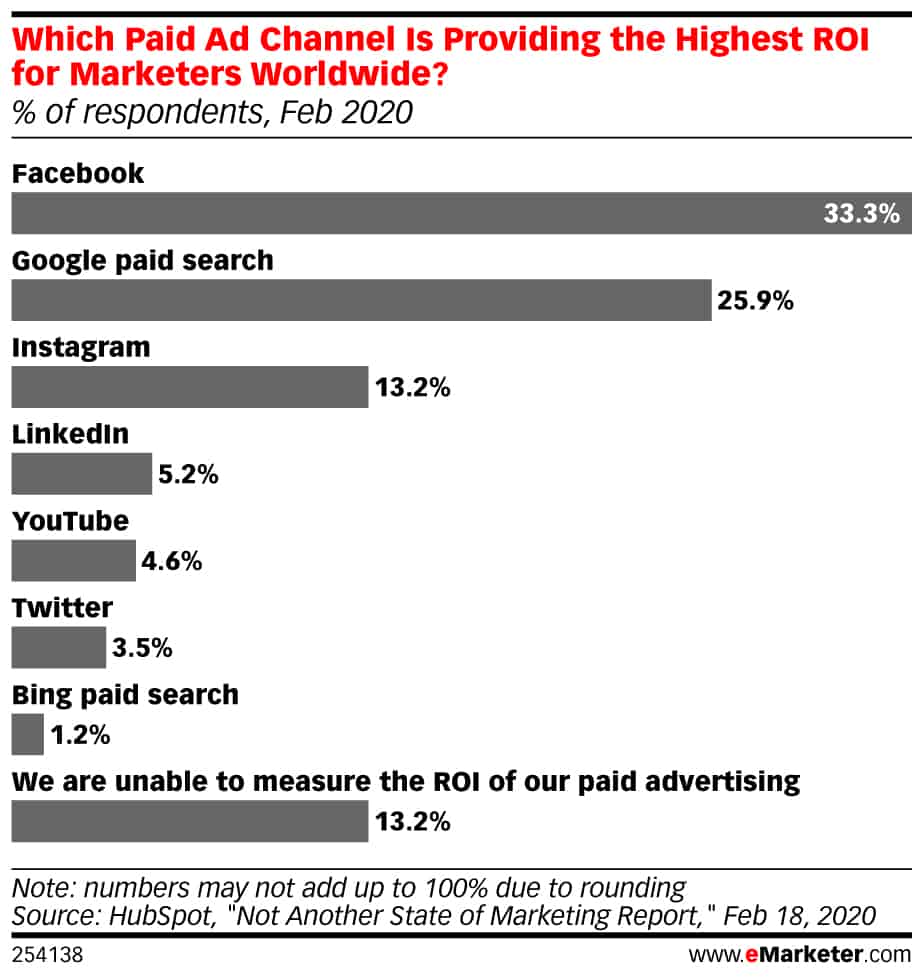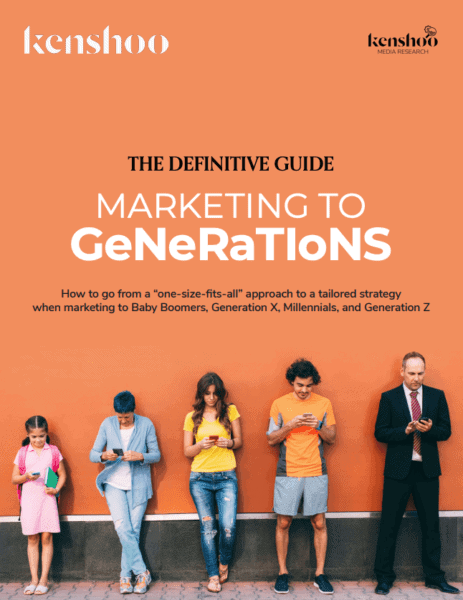
Joshua Dreller
Sr. Director, Content Marketing @ Skai

Joshua Dreller
Sr. Director, Content Marketing @ Skai
In a survey earlier this year, marketers ranked Facebook as the ad channel that delivers the highest return-on-investment (ROI).
At the core of why Facebook advertising works so well is the deep understanding of  what each of its 2 billion+ users might find relevant based on its social graph of interests and behaviors. Using these Facebook audience insights, the ad platform does a really great job matching highly relevant ads to people—not only on Facebook and Instagram but for any web publisher that is part of the Facebook Audience Network.
what each of its 2 billion+ users might find relevant based on its social graph of interests and behaviors. Using these Facebook audience insights, the ad platform does a really great job matching highly relevant ads to people—not only on Facebook and Instagram but for any web publisher that is part of the Facebook Audience Network.
Facebook audience targeting offers many attributes and demographic options and the way marketers segment and build targetable audiences is a key component to unlocking that ROI. By strategically clustering users into optimal groups, marketers can best pair the most meaningful and impactful ad copy with each audience to solicit clicks, engagement, and ultimately, conversions.
In fact, the way a marketer segments their Facebook audience might be one of the most important factors of social advertising success.
One of the best ways to gain insight into your Facebook audience is to use Facebook Audience Insights (FAI). This free tool shows you aggregate information for three key groups, people connected to your Page, everyone on Facebook, and those in your Custom Audiences.
Facebook Audience Insights a virtual treasure trove of valuable information you can use to learn so much about these Facebook audiences and then segment your audiences using that intel.

The following are five Facebook audience targeting segments that you should consider using as part of your core audience breakouts. Once segmented, you can control budgets at the audience level and build bespoke ad sets with messaging and offers that are highly relevant to the specific Facebook users you target.
By uploading your CRM data, you can segment your Facebook audiences into people who have and who haven’t purchased from you before. Regardless of other attributes, people who are already your customers are your best prospects and 70% of companies say it’s cheaper to retain a customer than acquire one. With customers, you can skip to the middle and lower funnel with your messaging, as the top-level awareness has already been built.
For non-customers, you will definitely need investment at the top of the funnel. If it’s true that your current customers are cheaper to retain, then getting “net-new” customers is a valuable way to move them to the more efficient, customer group. Give people who haven’t purchased from you before a low-cost option to break the ice so that you can build upon that relationship later. For example, retailers will often employ a loss-leader strategy and sell products at cost or even below cost to bring in customers and make up the loss with the other products that are sold.
By understanding where a Facebook user is in the purchase process, you can target them with the most impactful creative to help move them down the funnel. There are a few ways to discern this information. One of those ways is by the message type that they have engaged. Was it a top-funnel ad, a middle-funnel ad, or a bottom-funnel ad? For example, if someone is engaging with your awareness campaigns, they may be still stuck in the upper funnel so you should be “talking” with them at that level.
Another method to determine what part of the funnel a user may be is by which pages they have visited on your website. If they haven’t gone too deep into your site, they’re probably still just browsing around. If they’ve gotten to detail pages and watched product videos, they are most likely doing their deeper research and in the middle. However, if they’ve reached the buy pages and even started the checkout process, you can bet they’re at the bottom of the funnel. Use Facebook audience retargeting and the appropriate creative to move them toward the conversion.
Most businesses have a variety of goals that they’re trying to drive with their Facebook advertising investment. Practitioners can create campaigns by objective including things like traffic, conversion, reach & frequency, app installs, video views, and more. One of the best things you can do is to segment your audiences to target the people most likely to take the action you desire.
For example, an app install campaign would probably be best served to users already on a mobile device—and if the app is just for iOS or just for Android, Facebook enables you to target users on just those operating systems. Traffic campaigns might be best served to wide audiences so that you can get the most efficient cost-per-click. And if you’re running reach & frequency campaigns, you’re probably focused on a particular demographic so your targeting should reflect that.
Facebook Audiences Segment #4 – Target by Generation

For example, Baby Boomers may not be completely up to date on all of the latest slang, whereas Gen Z loves their memes. Millennials tend to be very in tune with today’s social issues while Gen Xers are generally more focused on their own lives and choices. The images, the text, and certainly the calls-to-action should vary depending on the group you target. If your most important Facebook audience is in just one of these groups—such as universities targeting the Gen Zers right now—then you are probably already using the appropriate messaging for that group. However, if you are targeting multiple generations on Facebook (i.e. for things everyone uses such as coffee, cars, & condiments) then you should split up your campaigns so that your ads are tailored for that specific demographic.
Download the complimentary Skai report for more information on marketing to generations.
Facebook Audiences Segment #5 – Audiences By Life Events
Several years ago, Google published some important research on micro-moments and how marketers should be thinking about their audience in terms of what they’re doing right now. Google identified 4 key micro-moment activities when someone is searching on their mobile devices:
As Google dominates search marketing, marketers are able to reach people as they search for this information. But, Facebook marketers can take advantage of this type of audience breakout as well.
By structuring your search campaigns against these four micro-moment categories with their own set of landing pages, Facebook marketers can pixel the individual landing pages of those campaigns so that they can retarget those people with social advertising using similar messaging. You can even set those retargeting pools to expire in a day or two so that you’re only targeting people who are in those micro-moments. It’s a way to tap into cross-channel signals and use what you know about them via their search behavior to better understand and engage them on Social.
Skai Social is the leading platform for enterprise social marketers who want to drive the most performance from their Facebook and Instagram campaigns. And, in the next era of marketing, social advertisers who have the right information in front of them will be able to make the best data-driven decisions on how to manage their programs.
Skai Social is pioneering Total Social Intelligence—a philosophy that is guiding our roadmap and innovation—to help social marketers garner the most insight on what is and isn’t working in their programs.
Reach out today to set up a brief demonstration to see the benefits of using this award-winning application.
You are currently viewing a placeholder content from Instagram. To access the actual content, click the button below. Please note that doing so will share data with third-party providers.
More InformationYou are currently viewing a placeholder content from Wistia. To access the actual content, click the button below. Please note that doing so will share data with third-party providers.
More InformationYou are currently viewing a placeholder content from X. To access the actual content, click the button below. Please note that doing so will share data with third-party providers.
More Information